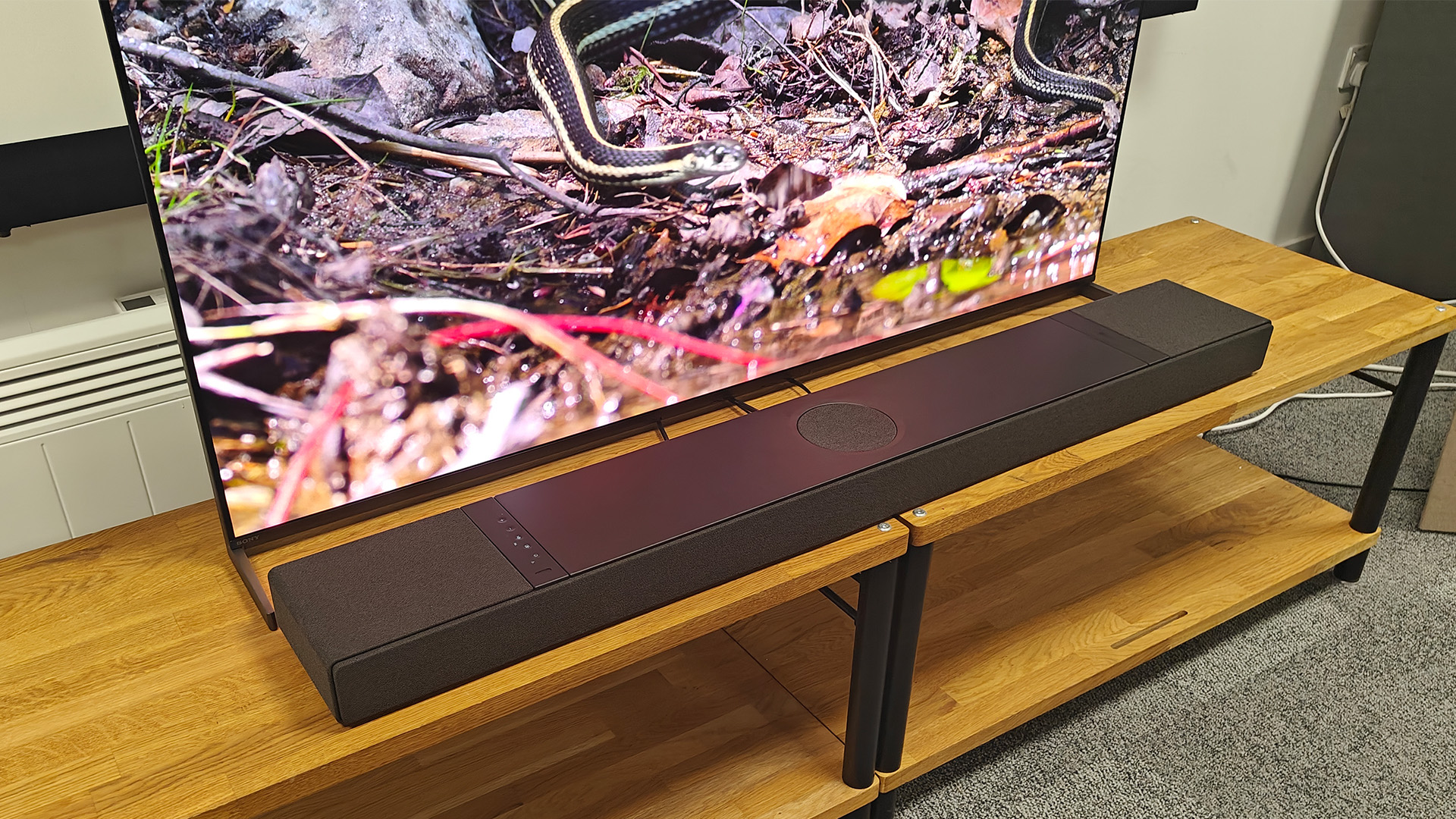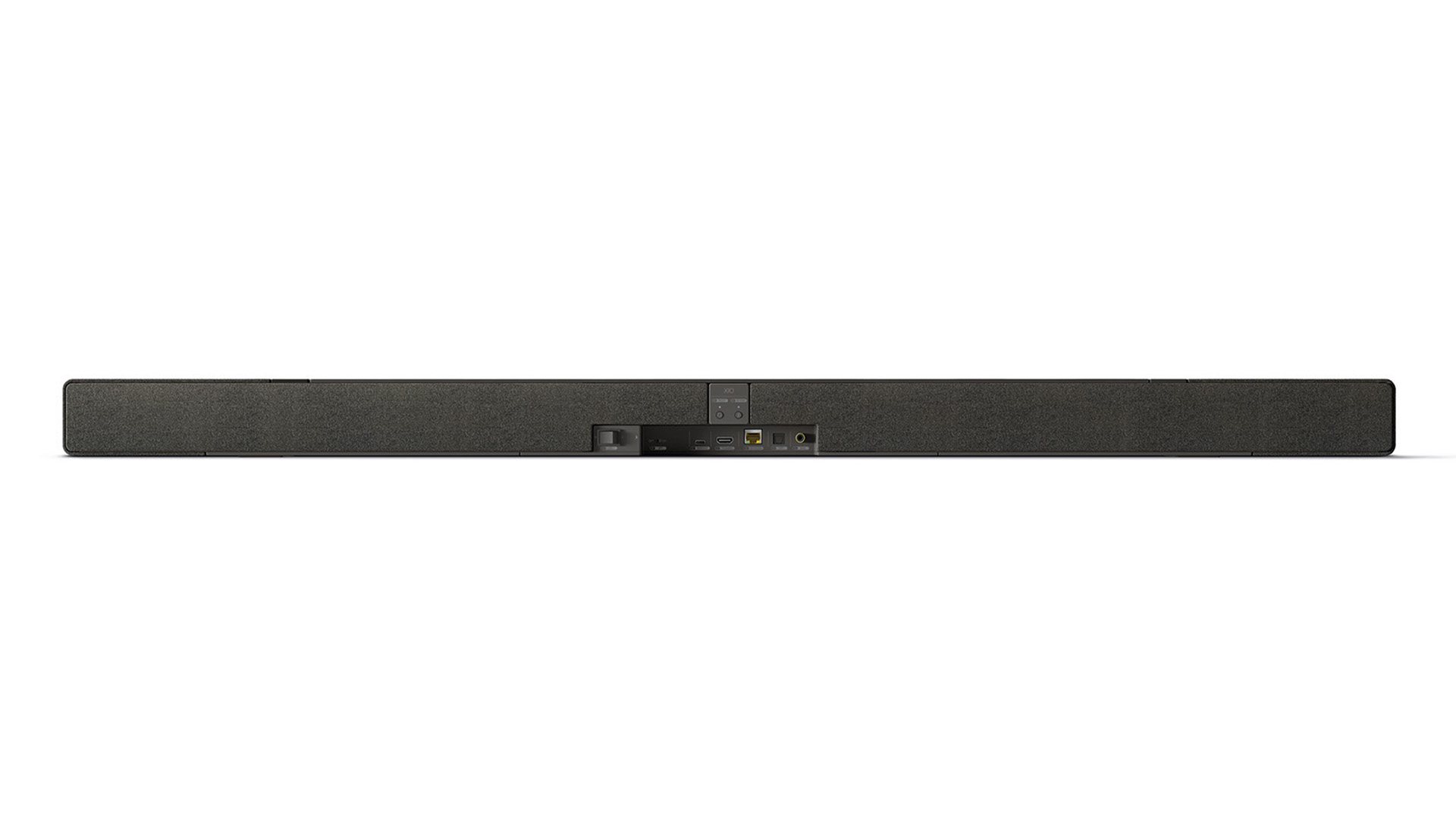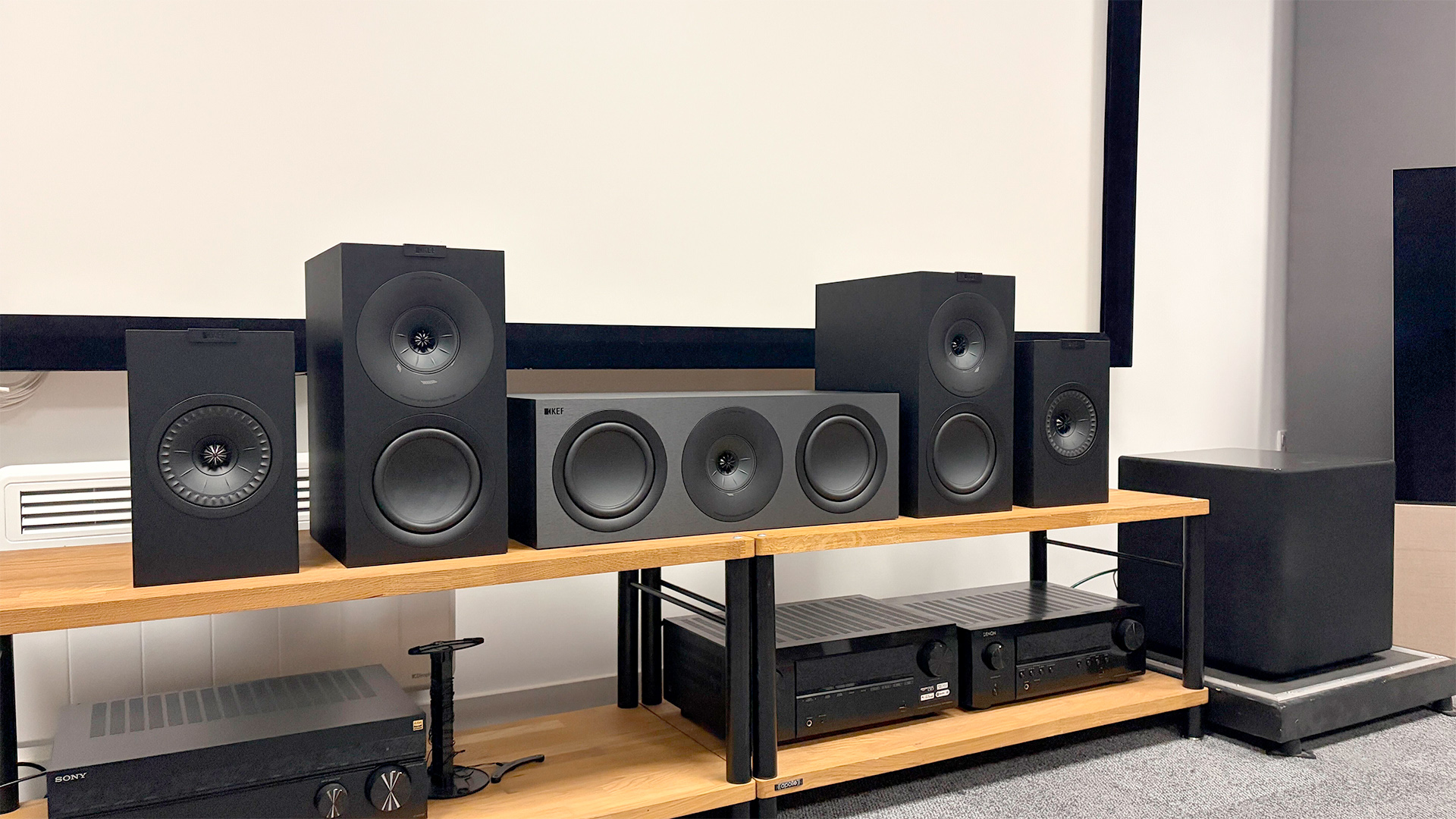I love the way the KEF XIO sounds, but this one little weakness is a big problem for me
An age-old issue that really shouldn’t exist with a Dolby Atmos soundbar this expensive

Golly gosh, the KEF XIO is a bit of alright.
KEF brought its new – and first-ever – soundbar in to show us a few weeks before it was announced, and I was immediately taken by the design.
I had expected something a bit more out there, with visible Uni-Q drivers and fancy colour combinations in the style of its LS range of desktop speakers.
Instead, the company has produced a Dolby Atmos soundbar that’s far more staid and subtle, and while that initially sounds disappointing, the XIO is so sleek, stealthy and stylish that you just have to admire its classiness.
Its super-thin design makes the XIO perfect for positioning in front of a TV, and it looks unbelievably good mounted on a wall beneath an OLED TV, thanks to it being mountable flat against the wall.
Set up is a doddle, too, and the really slick app makes general use truly enjoyable.
Of course, what matters most is the sound, and I had concerns here, particularly related to that slim design. If the move towards super-slim TVs has taught us anything, it’s that space-starved speakers struggle to produce satisfying sound.
The latest hi-fi, home cinema and tech news, reviews, buying advice and deals, direct to your inbox.
But I need not have worried. The XIO is, of course, thicker than most TVs, but KEF has also produced several new drivers that I won’t detail here (read our KEF XIO review for the full technical lowdown), other than to say they’re able to move much more air than one would expect of drivers in such a slim chassis, as well as being very cleverly controlled.
The resulting sound is exceptionally crisp and detailed, but also satisfyingly deep and punchy in the bass. The XIO fills a room admirably as well, delivering Dolby Atmos soundtracks with spaciousness and placing effects with rare three-dimensional precision.
All told, this is a truly lovely soundbar – probably the best I’ve ever heard – and I’d love to have it for my system at home. But there’s just one nerdy feature missing that means it won’t work for me.
Yep, I’m talking about HDMI sockets.

The KEF XIO has just one HDMI connection – an eARC port that connects it to your TV. The idea is that all of your sources are routed into your TV as normal, then the eARC connection handles the transmission of sound from TV to soundbar.
That’s great for most people, in that it keeps things nice and simple (though it can be tricky to ensure your TV is outputting sound in the right format), but it’s a pain in the bum for someone who has more than one high-spec games machine and a TV with just two HDMI 2.1 sockets.
I am one of those someones. I own a PlayStation 5 and Xbox Series X, and I want to be able to access the 4K/120Hz gameplay of both, which is dependent on HDMI 2.1 sockets.
Unfortunately, my Sony A95L TV, like all Sony, Panasonic, TCL and Hisense (and most Philips) TVs, has just two HDMI 2.1 sockets – and one of those doubles as the eARC port.
If I connect a soundbar such as the KEF XIO to the eARC port, I have just one HDMI 2.1 socket left for a console. Which means my other console will have to be connected to a 60Hz socket – or I’ll have to mess around and switch cables whenever I want to switch between them.
Many soundbars, particularly premium models, have additional HDMI 2.1 inputs to compensate for this. Some have just one, so you’re at least not losing out by connecting them to your TV, but others (the Samsung HW-Q990F and HW-Q990D, for example) have two, so that’s an HDMI 2.1 net gain.
The KEF XIO isn’t unique in omitting dedicated HDMI inputs and 4K/120Hz passthrough functionality – the Sonos Arc Ultra is another infamous example – but it feels particularly egregious at the XIO’s £1999 / $2500 / AU$3600 level.
Here’s hoping KEF’s second-gen XIO – or perhaps its sister soundbar, if such a thing is in development – fills in this feature gap so that gaming nerds like me can get fully on board.
MORE:
Read the full KEF XIO review
Here are the best Dolby Atmos soundbars you can buy right now
Tom Parsons has been writing about TV, AV and hi-fi products (not to mention plenty of other 'gadgets' and even cars) for over 15 years. He began his career as What Hi-Fi?'s Staff Writer and is now the TV and AV Editor. In between, he worked as Reviews Editor and then Deputy Editor at Stuff, and over the years has had his work featured in publications such as T3, The Telegraph and Louder. He's also appeared on BBC News, BBC World Service, BBC Radio 4 and Sky Swipe. In his spare time Tom is a runner and gamer.
You must confirm your public display name before commenting
Please logout and then login again, you will then be prompted to enter your display name.

